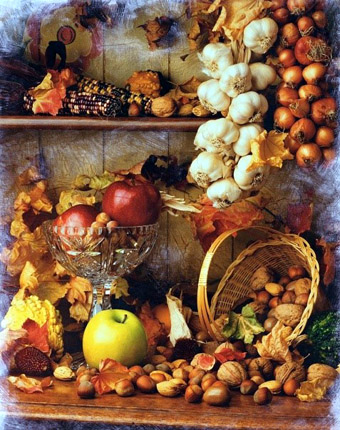
Food In Art
| published August 18, 2014 |
By Michael Sigler
Thursday Review contributor
Food is a cultural product like any other. Until recently it has been neglected, perhaps because it was felt to be beneath the dignity of the serious enquirer, or perhaps just because most people eat every day of their lives.
But if eating is the most basic of cultural acts, it has profound consequences. Our very environment is created-or destroyed-by the need for food. Not just today but in history; the barren fields in Giotto’s paintings are a vivid testimony of the impact that demographic pressure and dietary habits had on the European environment in the decades preceding the Black Death of the mid-fourteenth century.
Attitudes toward food and the table have undergone a long and profound change in Western history since the Middle Ages. In six centuries we have gone from a time when food supplies were always short and when famine struck frequently to our present health problems due to excessive food consumption. This radical change in the availability of food has also determined a basic change in the way we see it. From a quasi-sacred object of desire it has slowly become a mass commodity.
Paintings constitute a particularly sensitive documentation of this changing attitude to food. Works of art, almost despite themselves, document the changing habits, customs and fashions of an age. They allow us to follow the slow but steady changes in how people ate, where they ate, what they ate and with whom they ate.
Paintings also document, with a wealth of detail, the importance of meals and banquets in bringing people to a table, thus reinforcing the links responsible for the cohesion of traditional societies. From the rigid and rather bare tables of medieval banquets to the over abundant tables of the seventeenth and eighteenth centuries, the reason for holding such gatherings was not just eating together; it was above all a social and political event in which the menu, the seating arrangements and the very shape of the table itself represented an outward and visible sign of the hierarchies at work.
In the following weeks I will attempt to trace the history and significance of food from the very beginnings to our modern times. Together we will follow the trail of crumbs through history.
Editor's Note: This is the first in a series of articles to be published by TR's Michael Sigler.
Related Thursday Review articles:
The Brussels Sprouts Controversy; Michael Sigler; Thursday Review.
